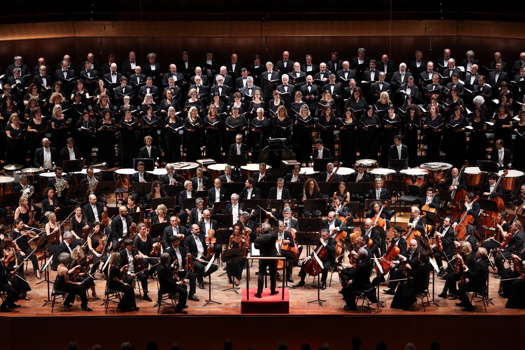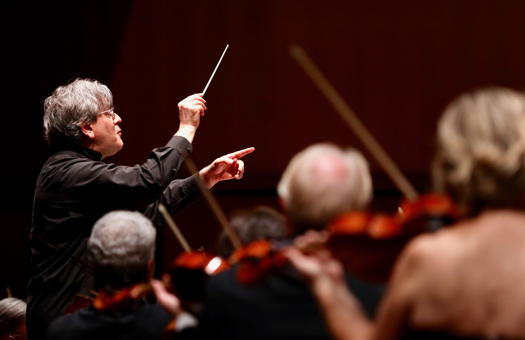 DISCUSSION: John Dante Prevedini leads a discussion about Composers, individuals or collective?, including contributions from David Arditti, Halida Dinova, Robert McCarney and Jane Stanley.
DISCUSSION: John Dante Prevedini leads a discussion about Composers, individuals or collective?, including contributions from David Arditti, Halida Dinova, Robert McCarney and Jane Stanley.
 VIDEO PODCAST: Slava Ukraini! - recorded on the day Europe woke up to the news that Vladimir Putin's Russian forces had invaded Ukraine. Also features Caitríona O'Leary and Eric Fraad discussing their new film Island of Saints, and pays tribute to Joseph Horovitz, Malcolm Troup and Maria Nockin.
VIDEO PODCAST: Slava Ukraini! - recorded on the day Europe woke up to the news that Vladimir Putin's Russian forces had invaded Ukraine. Also features Caitríona O'Leary and Eric Fraad discussing their new film Island of Saints, and pays tribute to Joseph Horovitz, Malcolm Troup and Maria Nockin.
- Gabriel Pierné
- Mary Isaac
- Thomas Bielinski
- Rémy Stricker
- Ahmed Adnan Saygun
- Emily Sun
- Philip Jones Brass Ensemble
- Quodlibet
Tremendous and Sublime
GIUSEPPE PENNISI listens to
Berlioz's 'Grande Messe des morts'
In Italy, the season's inauguration of the symphonic series of the National Santa Cecilia Academy in Rome is the only musical and cultural event equaling the inauguration of La Scala's opera season. On 10 October 2019, the huge Santa Cecilia concert hall was filled to the hilt. Along with music lovers, there were writers, visual artists, politicians and business leaders. A special concert offered. This season, the President of the Academy and Superintendent Michele dall'Ongaro and Musical Director Antonio Pappano conjured up a rarely performed score: Hector Berlioz's Requiem or the Grande Messe de morts. This is seldom performed because of the Gargantuan requirements: at least four hundred musicians - two hundred in the orchestra and two hundred in the chorus; Berlioz would have preferred some eight hundred. In addition, there are four brass ensembles in the last tier around the concert hall, or in the upper section of the Church, as originally thought. The soloist is a high texture tenor. Berlioz would have preferred eight soloists. In the concert series of the National Santa Cecilia Academy this is only the fifth time that this work has been played. There were three performances, as is usual in the symphonic concert series of the Academy: 10, 11 and 12 October 2019.
The orchestra of the National Santa Cecilia Academy was supplemented by the State Police Band (led by Maurizio Billi) and the San Carlo Theatre Chorus (led by Gea Garatti Contini). The Academy Chorus was led by its new director Pietro Monti. The tenor was Javier Camarena. Antonio Pappano conducted the whole lot.
A few words on the background of the Grande Messe des morts. In 1837, Adrien de Gasparin, the Minister of the Interior of France, asked Berlioz to compose a Requiem Mass to remember soldiers who died in the Revolution of July 1830. Berlioz accepted the request. Meanwhile, orchestras were growing in size and quality, and the use of woodwinds and brass was expanding. Berlioz wrote, 'if I were threatened with the destruction of the whole of my works save one, I should crave mercy for the Messe des morts.'
The debut was conducted by François Habeneck on 5 December 1837 in commemoration of General Damrémont and the soldiers killed in the Siege of Constantine. In his autobiographical Mémoires, Berlioz claimed that Habeneck put down his baton during the dramatic Tuba mirum - part of the Dies irae movement, prompting the composer to rush to the podium to conduct the rest of the work himself, thereby saving the performance from disaster. The premiere was a complete success. Berlioz revised the work twice in his life, first in 1852, making the final revisions in 1867, only two years before his death. One would think that, due to the large number of musicians, the composition would have very loud music; instead, many of his movements are at piano or even pianissimo volume, just to better juxtapose others when a high sound fills the whole auditorium. This is also because the Grande Messe des morts is not conceived as a drama, like, for instance, the Requiems by Mozart, Brahms and Verdi, but as grandiose musical architecture. Pappano, the orchestra and choruses made the audience feel that they were in a grand temple surrounded by music.

Some of the performers of Berlioz's 'Grande Messe des morts' in Rome on 10 October 2019. Photo © 2019 Riccardo Musacchio
The Requiem opens with rising scales in the strings, horns, oboes, and cors anglais preceding the choral entry. The first movement contains the first two sections of the music for the Mass - the Introit and the Kyrie. The sequence commences in the second movement, with the Dies irae. This is the really tremendous part of the composition. There are three choral sections each followed by a modulation to the next section. Following the third modulation, the four brass ensembles, specified by Berlioz to be placed at the corners of the stage and in the Santa Cecilia concert, set in four parts of the upper tier, first appear with a fortissimo E flat major chord, later joined by sixteen timpani, two bass drums, and four tam-tams. The loud flourish is followed by the choral entry, Tuba mirum, a powerful unison statement by the chorus basses at the top of their register, followed by the rest of the choir. There is a recapitulation of the fanfare, heralding the coming of the Last Judgment by the full choir. The choir whispers with woodwinds and strings to end the movement. The two choruses were very well amalgamated and perfectly in tune with the orchestra.
The third movement, Quid sum miser, is short, depicting the scene after Judgement Day. The Rex tremendae features the second entry of the brass choirs, and contains contrasting dynamics from the choir. Quaerens me is a quiet a cappella movement. This makes the contrast with the previous very loud section sharper. The Lacrimosa concludes the sequence section of the Mass: Pappano accentuated the sonata form and the dramatic effect of the gradual addition of brass and percussion.

Antonio Pappano conducting Berlioz's 'Grande Messe des morts' in Rome. Photo © 2019 Riccardo Musacchio
The Offertory opens as a quiet orchestral fugue. It is overlaid with a repeated motif from the choir, pleading for mercy at the judgment and a concluding part, the Hostias, short and scored for the male voices, eight trombones, three flutes, and strings. We listeners move from the tremendous to the sublime.
The Sanctus, in D flat, employs a solo tenor voice accompanied by long held notes from the flute and muted strings. Javier Camarena was superb. The last movement, containing the Agnus Dei and Communion sections of the Mass, features long held chords by the woodwinds and strings. The movement recapitulates melodies and effects from previous movements and is piano and pianissimo. The orchestra was excellent.
The audience was enthralled and erupted in ovations.
Copyright © 20 October 2019
Giuseppe Pennisi,
Rome, Italy



